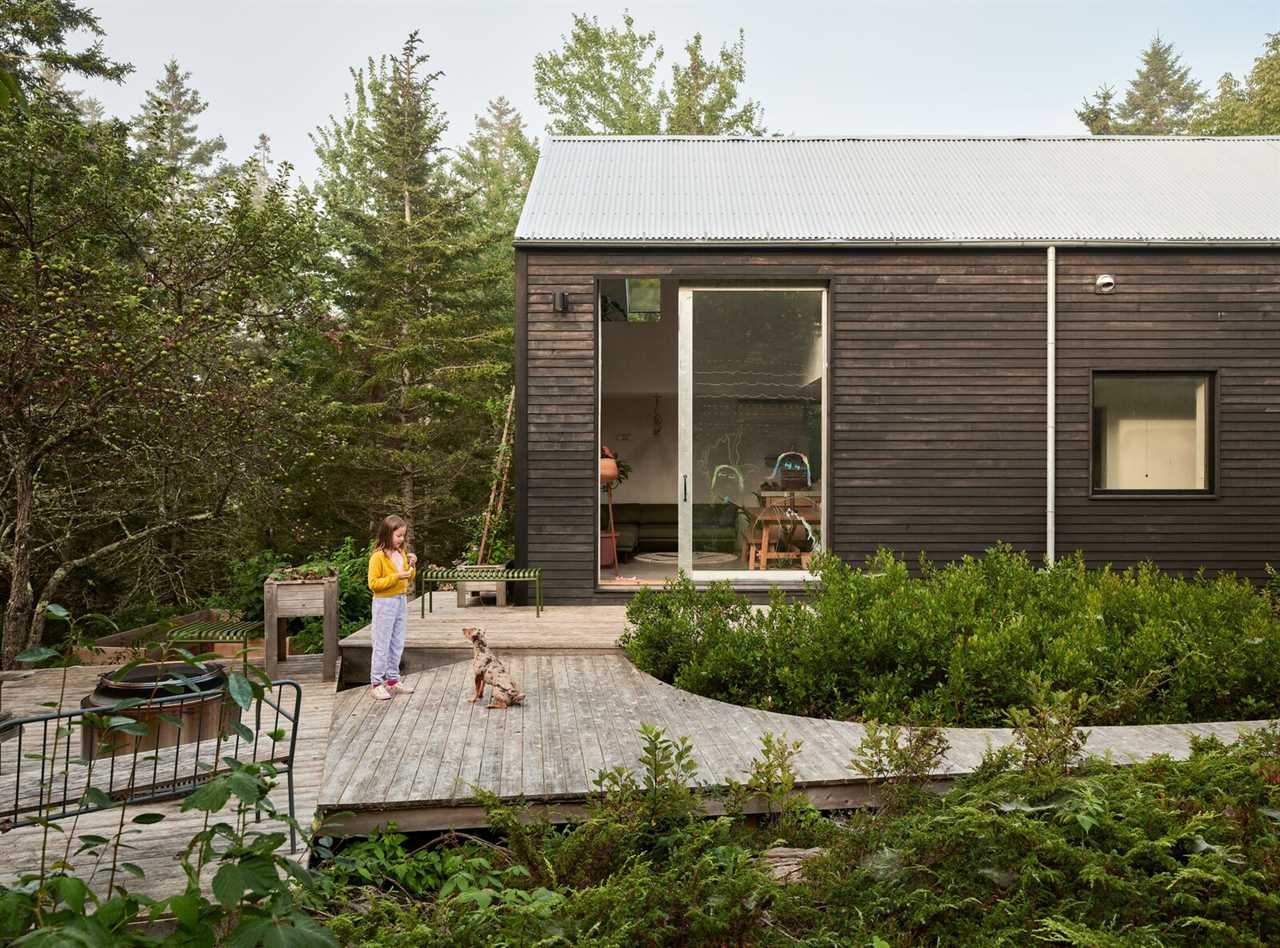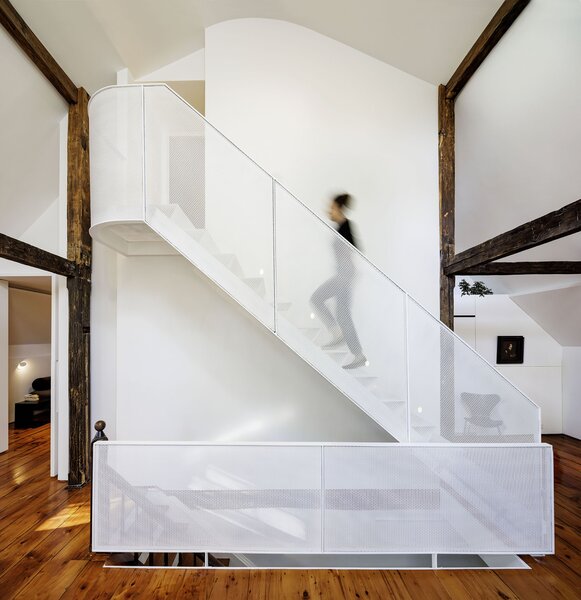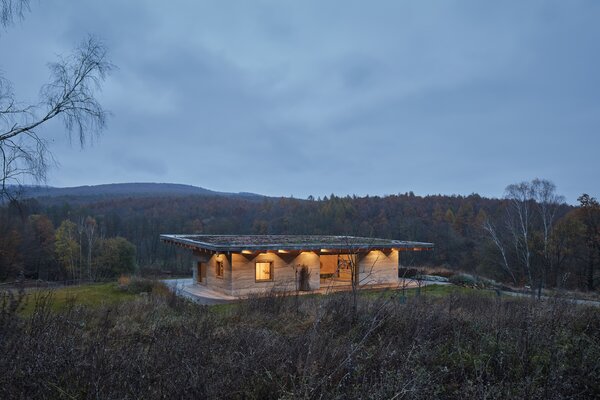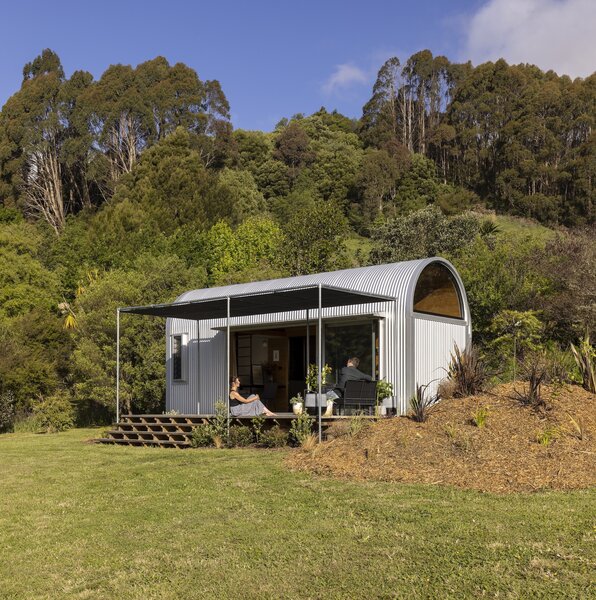Frippery has had its final breath. These designers say the rising cost of living and veneer of social media will drive us toward spaces that elevate raw, reworked materials.

While annual trends are often counted up as decorative and aesthetic movements, 2024 looks as if it’s going to be less concerned with looks—or at least more interested in defining good ones based on the origins of the source materials. When we asked these leading designers to share their thoughts on where things are headed for our homes, resoundingly, the answer was toward something more sustainable, with a focus on adaptive reuse and natural materials.

Creative re-use is set to be a leading trend in 2024. Fuller/Overby Architecture showcases the impact working with an existing framework can have in this 1700s farmhouse in New Jersey that has been adapted to create a family home. A cantilevered staircase with steel mesh tread and railings creates striking contrast with the old beams.
Photo by Melissa Dalton
Dovetailing with those sentiments, doing more with less will drive design, say others; rising costs of living will inspire a delicate balance of budgets and briefs like never before. But it won’t be as austere as it sounds. Richly textured natural elements and a celebration of prosaic features will result in spaces that have plenty of personality.
In keeping with these predictions, our six design experts say that it’s time to shed the excess: Think overly ornate surfaces, unnecessary demolition and thoughtless new builds, high-gloss finishes, and a lack of sensitivity to context. Here’s everything they loved and hated from last year, and what’s coming next for our homes in 2024.
William Samuels—William Samuels Architects
Loved It: Carbon-Negative Materials
Low-carbon and carbon-negative materials are nothing new, but in recent years they have become more widely available and commercially viable. "Materials and construction methods that may have been viewed as fringe, such as hempcrete and straw bale construction, are now being seriously considered for more mainstream projects as we look at ways to reduce the climate impact of building," says New Zealand architect William Samuels, who designed and built a home that can be transported on a flatbed truck. "2023 saw significant projects explore the aesthetic and design possibilities inherent within these materials, and hopefully we see this trend continue."

Designed by Atelier Lina Bellovicova, House LO marks the first residential project in the Czech Republic to use hempcrete, a sustainable and fire- and mold-resistant material.
Photo: BoysPlayNice Photography & Concept
Hated It: Fluted Surfaces
"I love a fluted surface as much as the next person, but there has been a tendency within the last couple of years to apply fluting to everything— fluted joinery, walls, light fittings, furniture… the list goes on," says Samuels. "On occasion, it appears that this surface treatment is applied in an attempt to glam up fairly ordinary work, rather than being used as a considered and appropriate design response."
What’s Next: Doing More With Less
The pandemic has had a lasting impact on the construction industry with significant rises in material and labor costs, and as budgets become increasingly difficult to align with briefs, architects need to reassess how to get the best outcomes from projects.
"Increasingly, this will mean architects will need to consider how to ‘do more with less’ and design small, efficient, and cost-effective projects," says Samuels. "This is an exciting prospect, as it requires innovative thinking and considered approaches to design challenges, with projects needing to resolve them through careful thinking rather than wasteful spending."

Architect William Samuels’s tiny home in Todds Valley, New Zealand, is a prefab structure clad in a corrugated iron shell coated with Zincalume. The home is located on rented land and is designed to be moved and expanded as needed—a response to the rising cost of living. "We’re increasingly seeing clients eager to explore alternative modes of living that depart from the single housing typology," he says. "There is a world of possibilities and design opportunities that are there to be explored when we rethink how we live and what home means to us."
Photo by Simon Devitt
See the full story on Dwell.com: These Are the Design Trends That Will Dominate in 2024
Related stories:
- Would Blocking Private Equity From Buying Homes Really Fix the Housing Shortage?
- These Tiny Prefab Cabins Are Designed to Feel Like Luxe Hotel Rooms
- You Can Build These Prefab ADUs Yourself, Which Start at $100 Per Square Foot
Read More
By: Mandi Keighran
Title: These Are the Design Trends That Will Dominate in 2024
Sourced From: www.dwell.com/article/2024-home-design-trends-cf9606a5
Published Date: Wed, 03 Jan 2024 17:15:22 GMT
.png)





